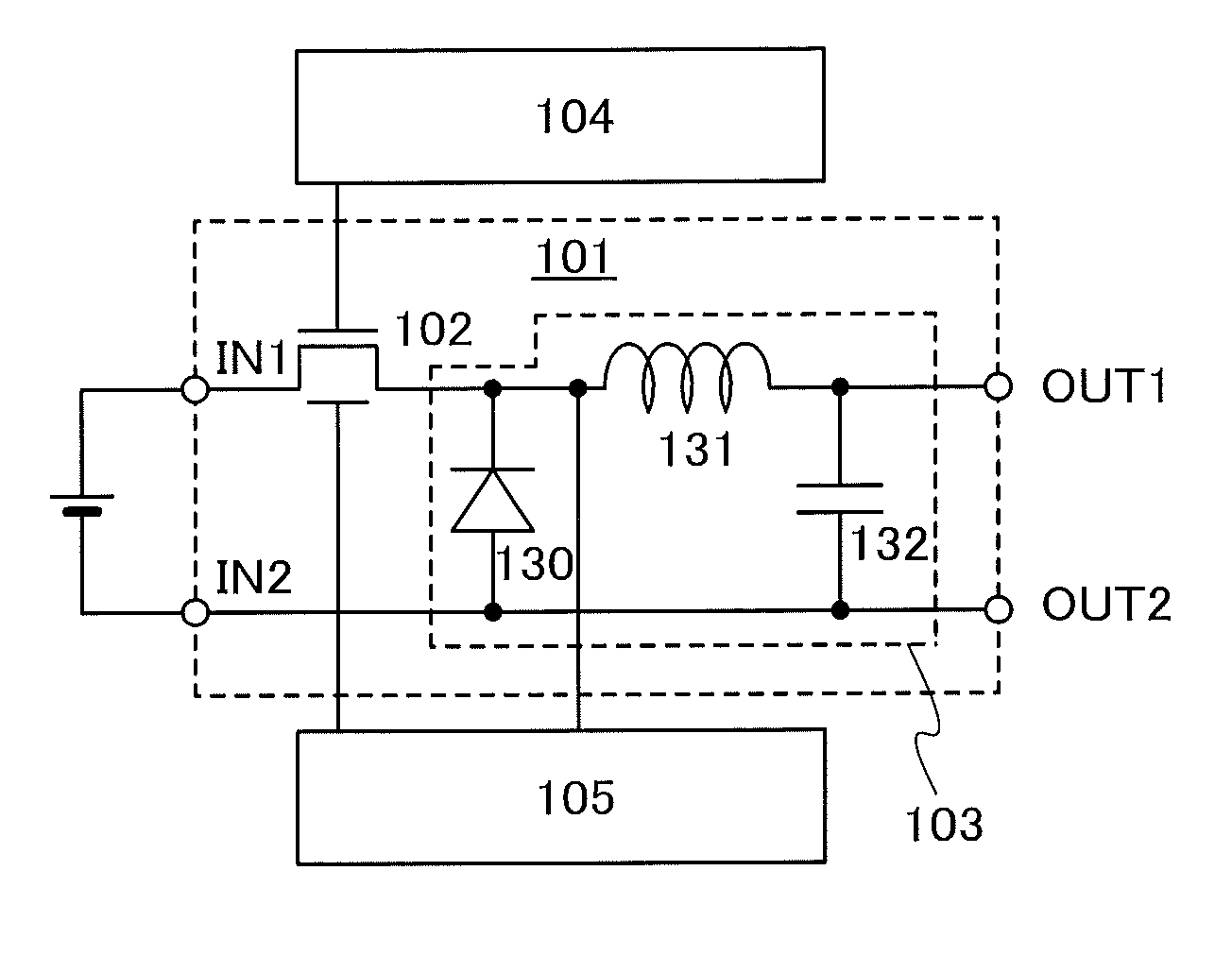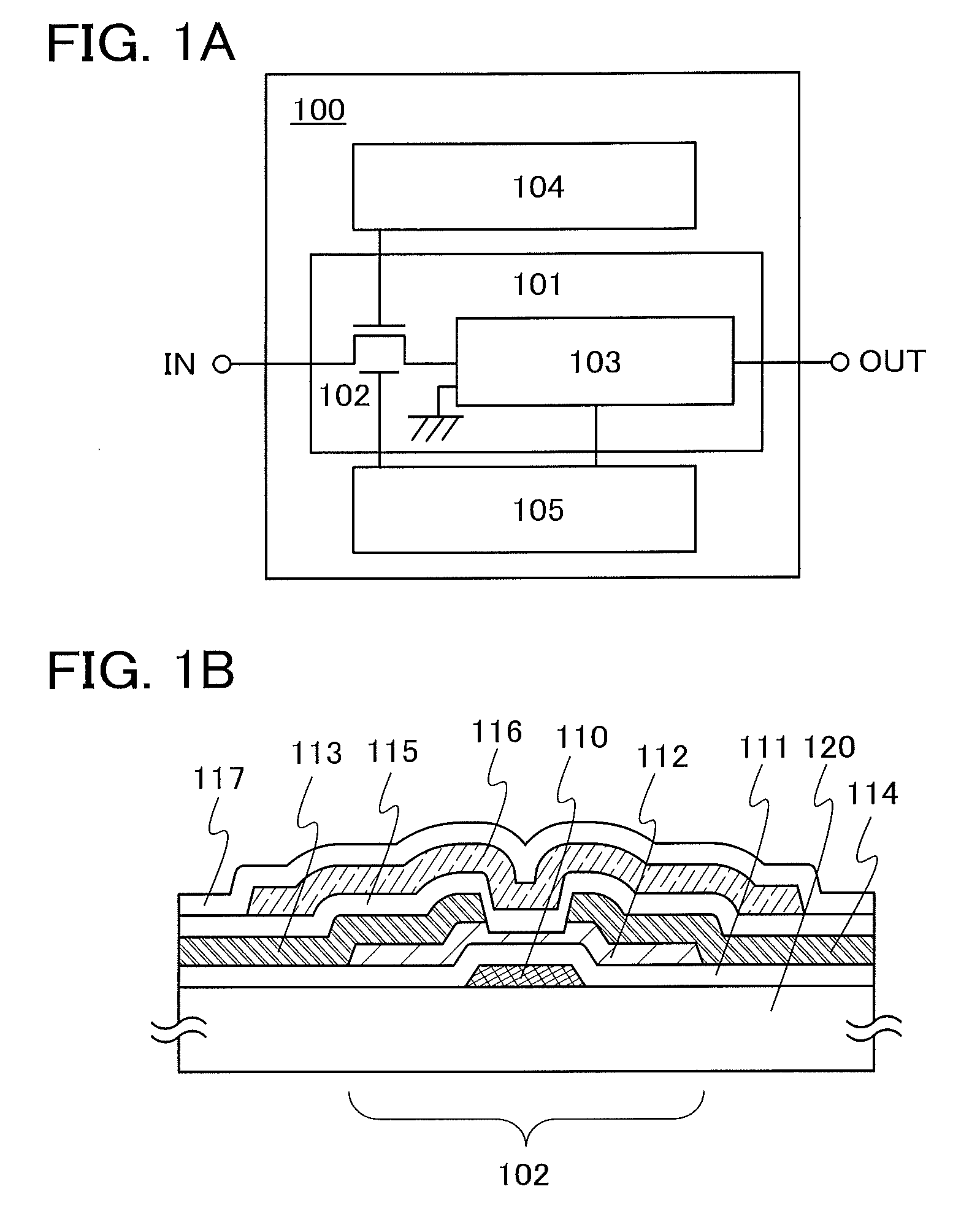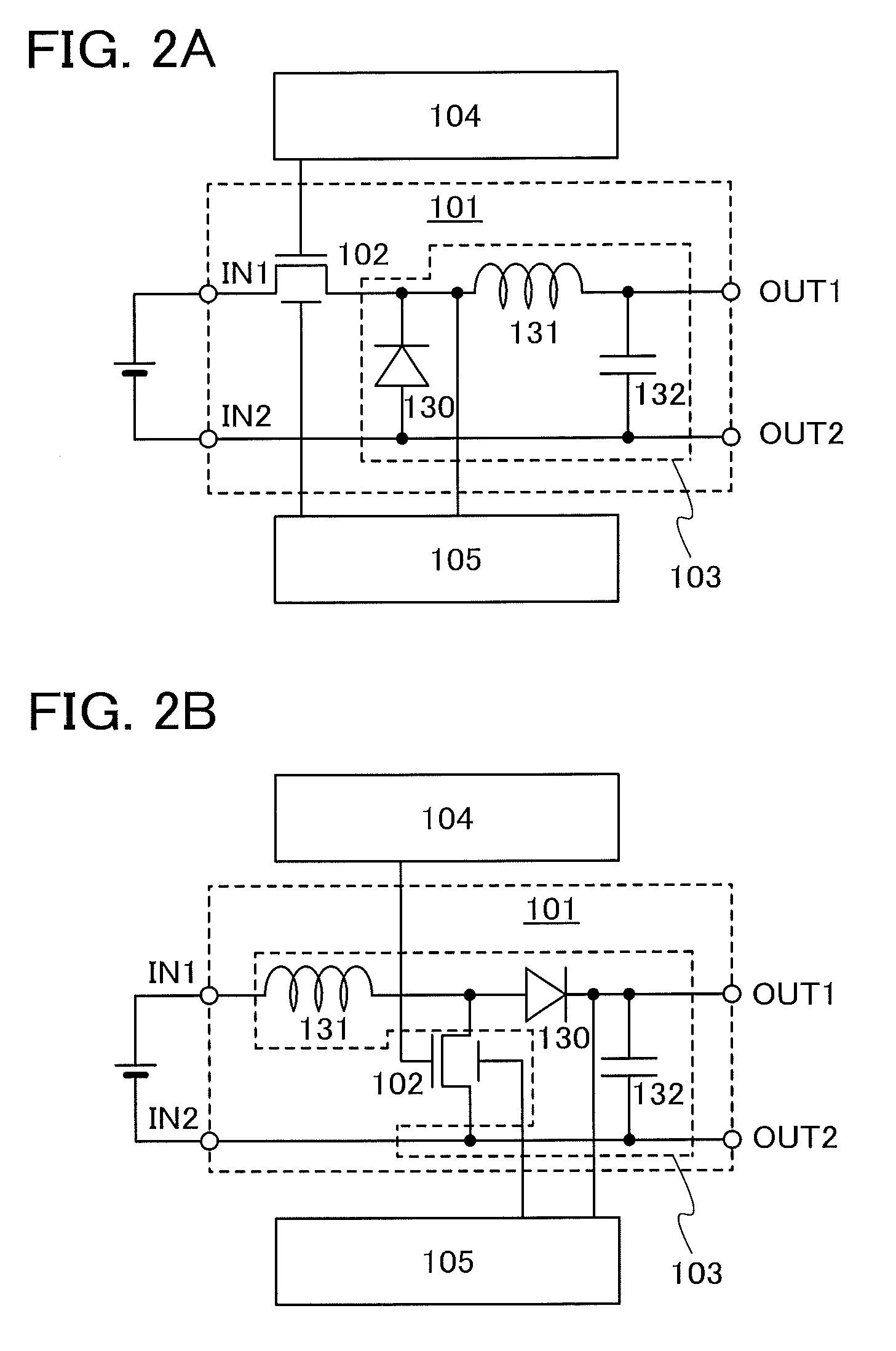DC/DC converter, power supply circuit, and semiconductor device
a technology of dc/dc converter and power supply circuit, which is applied in the direction of electric variable regulation, process and machine control, instruments, etc., can solve the problems of long continuous use time of portable electronic devices including semiconductor devices, low power consumption of semiconductor devices, etc., and achieve the improvement of power conversion efficiency, power conversion efficiency of dc-dc converter, and the effect of lowering the on-state resistance of transistors
- Summary
- Abstract
- Description
- Claims
- Application Information
AI Technical Summary
Benefits of technology
Problems solved by technology
Method used
Image
Examples
embodiment 1
[0041]FIG. 1A illustrates an example of a structure of a DC-DC converter according to an embodiment of the present invention.
[0042]A DC-DC converter 100 illustrated in FIG. 1A includes a power conversion circuit 101 which generates a constant voltage (output voltage) by the use of voltage applied to an input terminal IN (input voltage) and outputs the constant voltage from an output terminal OUT. The power conversion circuit 101 includes a constant-voltage generation portion 103 and a transistor 102 functioning as a switching element.
[0043]When the transistor 102 is on, the input voltage is supplied to the constant-voltage generation portion 103. When the transistor 102 is off, the input voltage is not supplied to the constant-voltage generation portion 103. When the transistor 102 is turned off, a fixed voltage such as a ground potential is supplied to the constant-voltage generation portion 103. Therefore, in response to switching of the transistor 102, a pulsed signal in which th...
embodiment 2
[0093]In this embodiment, a structure and characteristics of a transistor included in the DC-DC converter of this embodiment of the present invention, and the measurement of the power conversion efficiency of the DC-DC converter including the transistor will be described.
[0094]FIG. 5A is an example of a top view of a transistor included in the DC-DC converter according to an embodiment of the present invention. FIG. 5B illustrates a cross-sectional view taken along dashed line A1-A2 in the top view of FIG. 5A.
[0095]A transistor in FIGS. 5A and 5B includes the following over a glass substrate 500: an insulating film 501, a back gate electrode 502 which is over the insulating film 501, an insulating film 503 which is over the back gate electrode 502, a semiconductor film 504 which overlaps with the back gate electrode 502 with the insulating film 503 provided therebetween, a source electrode 505 and a drain electrode 506 which are over the semiconductor film 504, an insulating film 50...
embodiment 3
[0108]In this embodiment, an example of a structure of an output voltage control circuit in the case of employing the pulse width control will be described.
[0109]FIG. 9 schematically illustrates an example of a structure of an output voltage control circuit. The output voltage control circuit 104 in FIG. 9 includes a resistor 200, a resistor 201, an error amplifier 202, a phase compensation circuit 203, a comparator 204, a triangle wave generator 205, and a buffer 206.
[0110]The resistor 200 and the resistor 201 are connected in series. One of terminals of the resistor 200 is supplied with the output voltage from the output terminal OUT1 of the DC-DC converter. One of terminals of the resistor 201 is supplied with a fixed potential such as a ground potential. A node in which the other of the terminals of the resistor 200 and the other of the terminals of the resistor 201 are connected is connected to an inverting input terminal (−) of the error amplifier 202. Therefore, the output vo...
PUM
 Login to View More
Login to View More Abstract
Description
Claims
Application Information
 Login to View More
Login to View More - R&D
- Intellectual Property
- Life Sciences
- Materials
- Tech Scout
- Unparalleled Data Quality
- Higher Quality Content
- 60% Fewer Hallucinations
Browse by: Latest US Patents, China's latest patents, Technical Efficacy Thesaurus, Application Domain, Technology Topic, Popular Technical Reports.
© 2025 PatSnap. All rights reserved.Legal|Privacy policy|Modern Slavery Act Transparency Statement|Sitemap|About US| Contact US: help@patsnap.com



